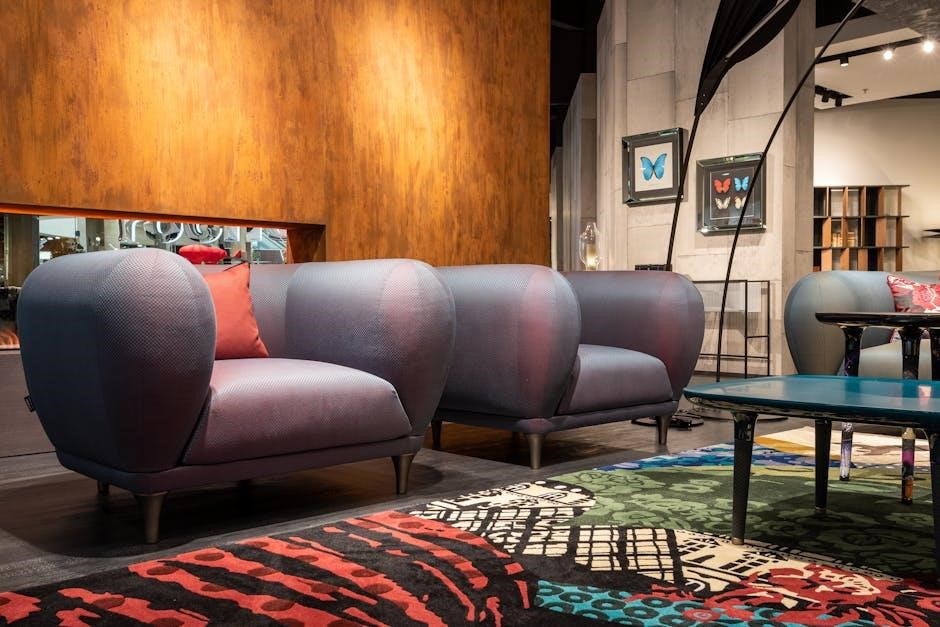
A-Frame houses are popular for their triangular design, offering practicality, ease of construction, and a natural aesthetic․ They are ideal for cabins, vacation homes, or backyard retreats․
1․1 What Are A-Frame Houses?
A-Frame houses are structures characterized by their distinctive triangular shape, with a steeply sloped roof and angled walls․ They are often simple, cozy, and ideal for cabins or tiny homes․ These designs typically feature open interiors, large windows, and a minimalist aesthetic, making them popular for retreats or backyard projects․ Their unique structure appeals to DIY enthusiasts and those seeking affordable, sustainable living solutions in natural settings․
1․2 Popularity of A-Frame Houses in Modern Architecture
A-Frame houses have gained significant popularity in modern architecture due to their simplicity, versatility, and aesthetic appeal․ Their triangular design offers a unique charm, making them ideal for cabins, vacation homes, or backyard retreats․ The ease of construction and affordability attract DIY enthusiasts and those seeking sustainable living solutions․ Their adaptability to various settings, from rural landscapes to urban gardens, further enhances their appeal in contemporary design trends and minimalist lifestyles․
1․3 Historical Background of A-Frame Designs
A-Frame designs have roots in traditional vernacular architecture, particularly in Scandinavian and Alpine regions, where the triangular structure provided strength against harsh weather․ These designs were often simple, functional, and easy to construct, making them accessible for local builders․ The popularity of A-Frames surged in the mid-20th century as vacation homes and cabins, blending practicality with a charming aesthetic that has endured through modern architectural trends․
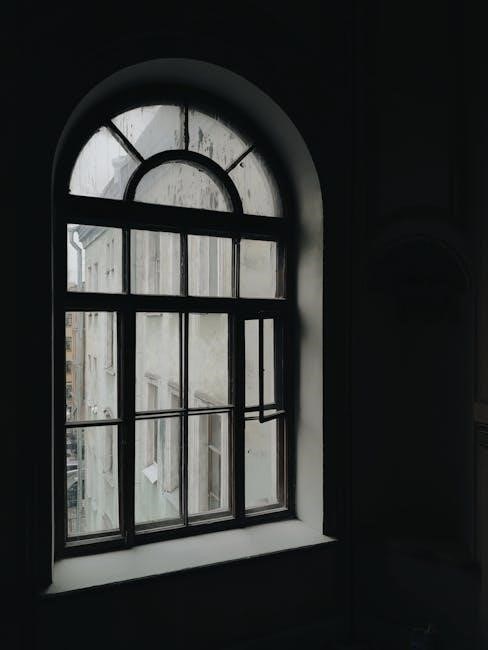
Benefits of A-Frame House Plans
A-Frame house plans are cost-effective, easy to construct, and energy-efficient, making them ideal for affordable living, sustainable building, and creating cozy, functional spaces with minimal materials․
2․1 Cost-Effective and Affordable
A-Frame house plans are highly cost-effective, offering affordable options for tiny homes, cabins, and backyard retreats․ With simple designs requiring minimal materials, these plans reduce construction costs․ Free PDF downloads, such as the 36-a-frame-house-plans․pdf, provide accessible blueprints․ Prices for detailed plans often drop from $1,450 to $50, making them budget-friendly․ DIY-friendly designs further lower expenses, ensuring A-Frame houses remain an economical choice for various projects․
2․2 Energy Efficiency and Sustainability
A-Frame houses are inherently energy-efficient due to their triangular design, which minimizes exterior walls and optimizes insulation․ The roof’s steep pitch allows snow to slide off, reducing weight and potential damage․ Eco-friendly materials like SIPs (Structural Insulated Panels) enhance sustainability․ Large windows provide natural light and ventilation, reducing reliance on electricity․ These features make A-Frame homes a practical choice for environmentally conscious builders seeking energy savings and sustainable living solutions․
2․3 Ease of Construction
A-Frame houses are known for their simplicity and ease of construction․ The triangular design requires fewer materials and labor, making it accessible for DIY enthusiasts․ Detailed blueprints and material lists simplify the process, ensuring a smooth building experience․ Suitable for all skill levels, A-Frame plans save time and reduce construction costs, making them an ideal choice for those looking to build efficiently and effectively․

Types of A-Frame House Plans
A-Frame house plans include tiny, cabin, and multi-level designs, offering versatility for various needs, from cozy retreats to spacious family homes, all with a unique aesthetic appeal․
3․1 Tiny A-Frame House Plans
Tiny A-Frame house plans are perfect for compact retreats, offering simplicity and affordability․ Ideal for backyard accessory units, home offices, or cozy getaways, these designs feature minimalist layouts, easy construction, and versatility․ Many free PDF plans include blueprints, material lists, and detailed designs, making them accessible for DIY projects․ Their small footprint and efficient use of space make tiny A-Frames a popular choice for sustainable living and budget-friendly builds, appealing to those seeking simplicity and charm․
3․2 A-Frame Cabin Plans
A-Frame cabin plans are ideal for vacation homes or secluded retreats, blending seamlessly into natural landscapes․ These designs emphasize durability and simplicity, often featuring open interiors and minimalistic aesthetics․ Many free PDF plans include detailed blueprints, material lists, and construction guides, making them accessible for DIY enthusiasts․ Popular among outdoor enthusiasts, A-Frame cabins are perfect for rustic getaways, offering charm and functionality in remote or woodland settings, with designs suitable for various budgets and environments․
3․4 Multi-Level A-Frame House Plans
Multi-level A-Frame house plans offer expanded living spaces while maintaining the classic triangular design․ These plans often include lofts, additional bedrooms, and modern amenities, catering to larger families or those needing extra space․ They blend functionality with the charm of A-Frame architecture, providing versatile layouts for various lifestyles․ Free PDF plans are widely available, making it easy to explore and customize multi-level designs for your unique needs and preferences․

Where to Find Free A-Frame House Plans in PDF
Free A-Frame house plans in PDF are available on various websites, DIY platforms, and open-source architectural resources, offering downloadable designs, blueprints, and material lists for easy access․
4;1 Websites Offering Free Downloads
Websites offer free A-Frame house plans in PDF, including tiny houses, cabins, and 3-bedroom designs․ These plans provide blueprints, floor layouts, and material lists, ideal for DIY projects and affordable construction․ Popular platforms feature downloadable resources, such as 36-a-frame-house-plans․pdf and A-Frame Tiny House Plans, ensuring easy access to detailed designs and building guides for various retreats and residential use․
4․2 DIY Platforms and Communities
DIY platforms and communities offer free A-Frame house plans, sharing blueprints and material lists․ Websites like Pinterest, Reddit, and specialized DIY forums provide access to downloadable PDFs, such as 36-a-frame-house-plans․pdf․ These communities often include tips for customization and construction, fostering collaboration among builders․ They are invaluable resources for enthusiasts seeking affordable and sustainable A-Frame designs, from tiny homes to larger retreats․
4․3 Open-Source Architectural Resources
Open-source platforms like GitHub and Open Architecture Network provide free A-Frame house plans in PDF and CAD formats․ These resources often include customizable designs, material lists, and blueprints․ They encourage collaboration, allowing users to adapt plans for various needs․ Such platforms are ideal for DIY enthusiasts and professionals seeking affordable, sustainable, and innovative designs for cabins, tiny homes, or retreats․
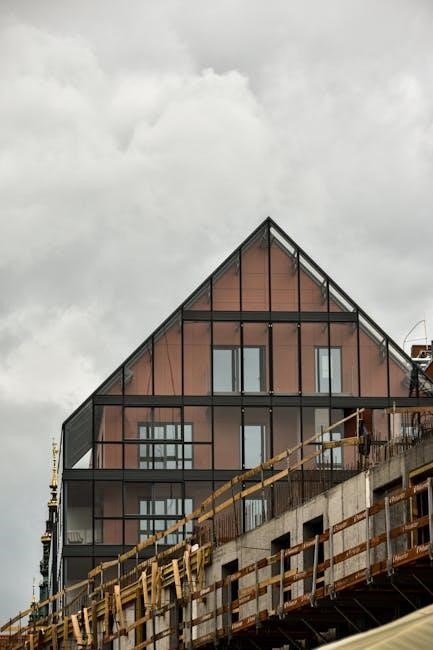
Key Features of A-Frame House Plans
A-Frame house plans include detailed floor layouts, material lists, and blueprints, ensuring a structured approach to building․ These features provide clarity for DIY and professional construction․
5․1 Floor Plans and Layouts
A-Frame house plans offer diverse floor layouts, from cozy tiny homes to spacious cabins․ Many include detailed designs for 1-bedroom tiny houses, multi-level structures, or backyard retreats․ These plans provide clear room arrangements, ensuring functionality and flow․ DIY enthusiasts can find layouts tailored for simplicity, while larger designs cater to families․ The variety of floor plans makes A-Frame homes adaptable to different lifestyles and preferences, offering practicality and aesthetic appeal․
5․2 Material Lists and Requirements
A-Frame house plans often include detailed material lists, ensuring clarity for DIY projects․ Common materials include durable lumber, metal brackets, roofing materials, and siding․ Insulation, windows, and doors are also specified to meet energy efficiency standards․ These lists are customizable based on design complexity and location, providing flexibility for various builds․ Many plans offer pre-measured kits, simplifying the construction process and reducing waste․ This ensures a smooth building experience for enthusiasts of all skill levels․
5․3 Blueprints and Detailed Designs
A-Frame house plans include comprehensive blueprints with detailed designs, ensuring every aspect of construction is clear; These blueprints often feature precise measurements, layouts, and structural details․ Many plans also provide CAD files for customization․ Designs range from simple tiny cabins to multi-level homes, offering versatility for different needs․ Whether for a cozy retreat or a spacious family home, these blueprints guide builders through every step of the process․

Tools and Materials Needed
Essential materials include lumber, roofing, fasteners, and insulation․ Tools like saws, drills, and hammers are required․ Safety gear, such as hard hats and gloves, is crucial for construction․
6․1 Essential Building Materials
The primary materials needed for constructing an A-Frame house include durable lumber for framing, roofing materials like metal or asphalt shingles, and exterior finishes such as siding or wood panels․ Insulation is crucial for energy efficiency, and fasteners like nails and screws are necessary for structural integrity․ Additionally, adhesives and sealants are required to ensure weather-tightness․ Sustainable options, such as reclaimed wood or eco-friendly insulation, can also be incorporated․ Proper material selection ensures durability and safety․
6․2 Required Tools for Construction
Essential tools for building an A-Frame house include a circular saw for cutting lumber, a drill for screwing pieces together, and a hammer for framing․ Measuring tools like tape measures and levels ensure accuracy․ Safety equipment such as hard hats and gloves are mandatory․ Power tools like impact drivers and reciprocating saws can streamline the process․ Hand tools like wrenches and pliers are also necessary for various tasks․ Proper tools ensure efficient and safe construction․
6․3 Safety Equipment and Gear
Safety is paramount in A-Frame construction․ Essential gear includes hard hats to protect against falling debris, safety glasses for sawing, and steel-toe boots for foot protection․ High-visibility vests improve on-site visibility, while gloves prevent injuries during lifting and handling materials․ Respiratory masks are crucial when cutting wood or handling chemicals․ Harnesses and ropes are necessary for roof work․ First aid kits should always be on hand to address minor injuries promptly․ Proper safety equipment ensures a secure working environment․

DIY Construction Tips
Plan carefully, measure accurately, and use pre-designed kits for simplicity․ Follow blueprints closely and consult DIY communities for troubleshooting and expert advice․
7․1 Step-by-Step Building Process
Start with site preparation and foundation work․ Assemble the frame using pre-cut materials, ensuring precise angles and stability․ Install roofing and siding, then add windows and doors․ Finish with insulation, electrical, and plumbing installations․ Complete the interior with flooring, walls, and ceilings․ Finally, add exterior finishes and landscaping․ Follow detailed blueprints and safety guidelines for a successful project․
7․2 Foundation and Framing
Begin by preparing the site and laying a sturdy foundation to ensure stability․ Construct the A-frame structure using durable materials like timber, ensuring precise angles and alignment․ Secure the frame with bolts and brackets for strength․ Use pre-cut materials to simplify assembly․ Follow blueprint specifications for accurate measurements․ Ensure the frame is level and plumb before proceeding․ Proper framing is essential for withstanding wind and weather conditions, providing a safe and durable structure․
7․3 Roofing and Exterior Finishing
Install roofing materials like metal or asphalt shingles, ensuring a watertight seal․ Secure the roof to the frame using durable fasteners․ Add exterior finishes such as wood siding or panels for a polished look․ Apply weather-resistant coatings to protect against elements․ Ensure proper ventilation to prevent moisture buildup․ Finish with paint or stain to enhance durability and aesthetics․ These steps complete the exterior, making the A-frame house sturdy and visually appealing․
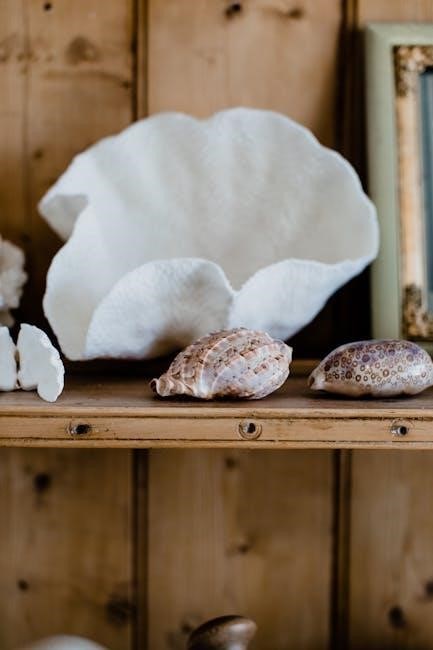
Legal and Safety Considerations
Ensure compliance with local building codes, zoning laws, and safety standards․ Obtain necessary permits before construction․ Secure insurance coverage for liability and property damage․ Conduct regular inspections to guarantee adherence to regulations and ensure a safe living environment․ This step is crucial for legal compliance and long-term safety of the A-frame house․
8․1 Permits and Zoning Laws
Before constructing an A-frame house, ensure compliance with local zoning laws and obtain necessary permits․ Verify land use regulations, setbacks, and height restrictions․ Submit detailed plans, including blueprints and material lists, for approval․ Failure to comply may result in fines or project delays․ Consult local authorities to understand specific requirements and ensure your project meets all legal standards․ Proper documentation is essential to avoid legal issues and ensure a smooth construction process․
8․2 Safety Standards and Building Codes
Ensure your A-frame house complies with local safety standards and building codes․ Verify that materials meet fire and structural safety requirements․ Check for load-bearing capacities, especially for roofs, to withstand wind and snow․ Ensure electrical and plumbing systems meet safety regulations․ Regular inspections during construction can prevent violations․ Adherence to codes ensures durability and safety, protecting both occupants and the structure from potential hazards․ Always consult local building authorities for specific guidelines․
8․3 Insurance and Liability
Secure adequate insurance to protect your A-frame house project․ Liability insurance is essential to cover accidents or damages during construction․ Ensure coverage includes structural integrity and potential natural disasters․ Verify if your policy includes DIY projects or hire contractors with proper insurance․ Understand local regulations regarding liability coverage for DIY builds․ Proper insurance safeguards your investment and ensures financial protection against unforeseen events or legal claims․ Always review policies before starting your project․
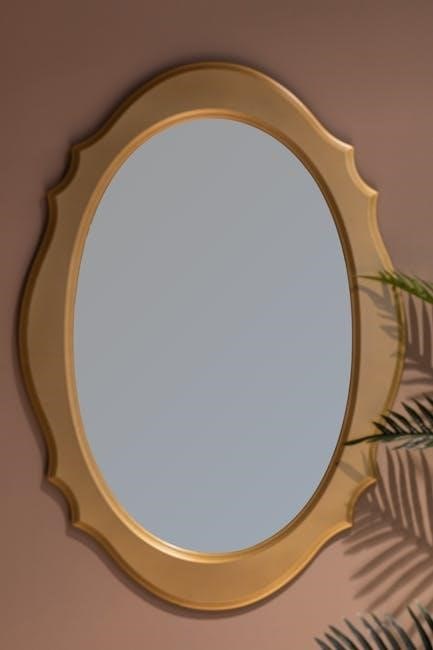
Customizing Your A-Frame House Plan
Personalize your A-frame house with unique design elements, tailored floor plans, and sustainable features to create a space that reflects your lifestyle and preferences perfectly․
9․1 Personalizing Floor Plans
Personalizing floor plans allows you to tailor the layout of your A-frame house to suit your needs․ Start by assessing the space requirements for each room, considering factors like family size and lifestyle․ You can adjust the number of bedrooms, the size of the living areas, and the placement of windows to maximize natural light․ Additionally, incorporating specific design elements such as lofts, mezzanines, or open-concept living spaces can enhance functionality and aesthetics․ Many free PDF plans offer customizable options, enabling you to modify the basic structure while maintaining the iconic A-frame charm․ This step ensures your home is both functional and reflective of your personal style․
9․2 Adding Unique Design Elements
Enhance your A-frame house with unique design elements to make it stand out․ Consider adding large windows for panoramic views, exposed beams for a rustic charm, or a wrap-around porch for outdoor living․ Incorporate skylights to bring in natural light or install a loft for extra space․ Customizable PDF plans often include options for modern finishes, such as metal accents or reclaimed wood, allowing you to create a personalized and visually striking home․
9․3 Incorporating Sustainable Features
Incorporate eco-friendly elements into your A-frame house for a sustainable living space․ Consider adding solar panels, rainwater harvesting systems, or energy-efficient insulation․ Use reclaimed wood for construction to reduce environmental impact․ Choose materials like recycled metal for roofing or low-VOC paints for healthier indoor air quality․ Many free PDF plans include options for green features, ensuring your A-frame home is both environmentally friendly and cost-effective, blending seamlessly into natural surroundings while lowering energy costs․
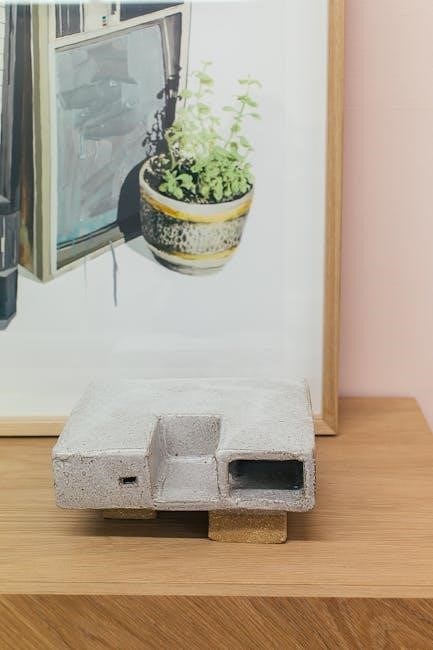
Frequently Asked Questions
Explore common questions about A-frame house plans, such as availability, cost, and customization․ Discover tips for DIY construction and learn about durability and sustainability options․
10․1 Can I Build an A-Frame House Myself?
Yes, building an A-frame house yourself is feasible with proper plans and materials․ Many free PDF plans offer step-by-step guides, making it accessible for DIY enthusiasts․ While some construction experience is helpful, the simplicity of A-frame designs allows even novices to succeed․ Ensure you have the right tools, materials, and permits before starting․ With dedication and careful planning, you can construct a charming and functional A-frame home․
10․2 How Long Does It Take to Build an A-Frame House?
The construction time for an A-frame house varies based on size, complexity, and labor․ A small A-frame cabin might take 2-4 months, while larger designs could require 6-12 months․ Factors like permits, material preparation, and weather can influence the timeline․ DIY projects may take longer, but using pre-made kits can expedite the process․ Breaking the project into stages helps estimate the time more accurately․
10․3 Are A-Frame Houses Durable?
A-Frame houses are known for their durability due to their robust geometric structure․ The triangular design provides excellent stability and resistance to environmental stresses like wind and snow․ When built with quality materials, such as treated wood and durable roofing, these houses can last for decades․ Regular maintenance is essential to ensure longevity, but overall, A-Frame houses are a reliable choice for long-term living or vacation homes․
A-Frame houses offer a perfect blend of affordability, simplicity, and charm․ With free PDF plans available, building your dream home or cabin has never been more accessible․
11․1 Final Thoughts on A-Frame House Plans
A-Frame house plans offer a perfect balance of style, practicality, and affordability․ With free PDF resources widely available, homeowners and DIY enthusiasts can easily access detailed blueprints and guides․ These plans cater to diverse needs, from tiny homes to vacation cabins, making them a versatile choice․ Their simplicity and sustainability have made A-Frame houses a popular option for those seeking a unique, eco-friendly living space․
11․2 Encouragement to Start Your Project
With countless free PDF resources available, starting your A-Frame house project has never been easier․ Embrace the simplicity and charm of these designs, whether for a cozy cabin or a modern home․ The availability of detailed plans and DIY guides makes it accessible for everyone․ Take the first step today and turn your vision into reality—your dream A-Frame house awaits!